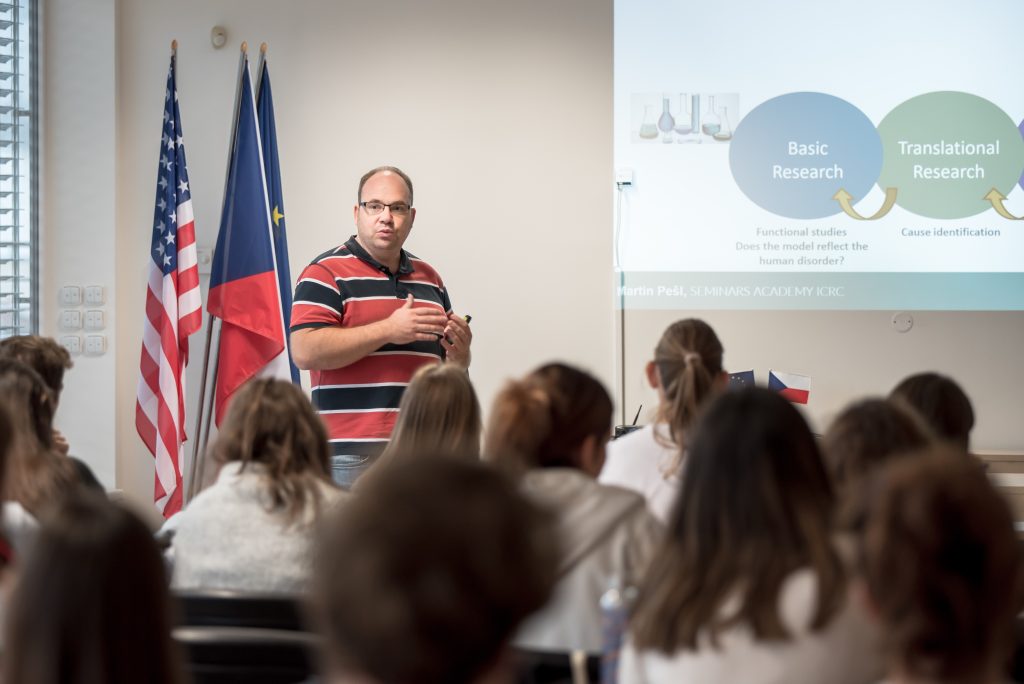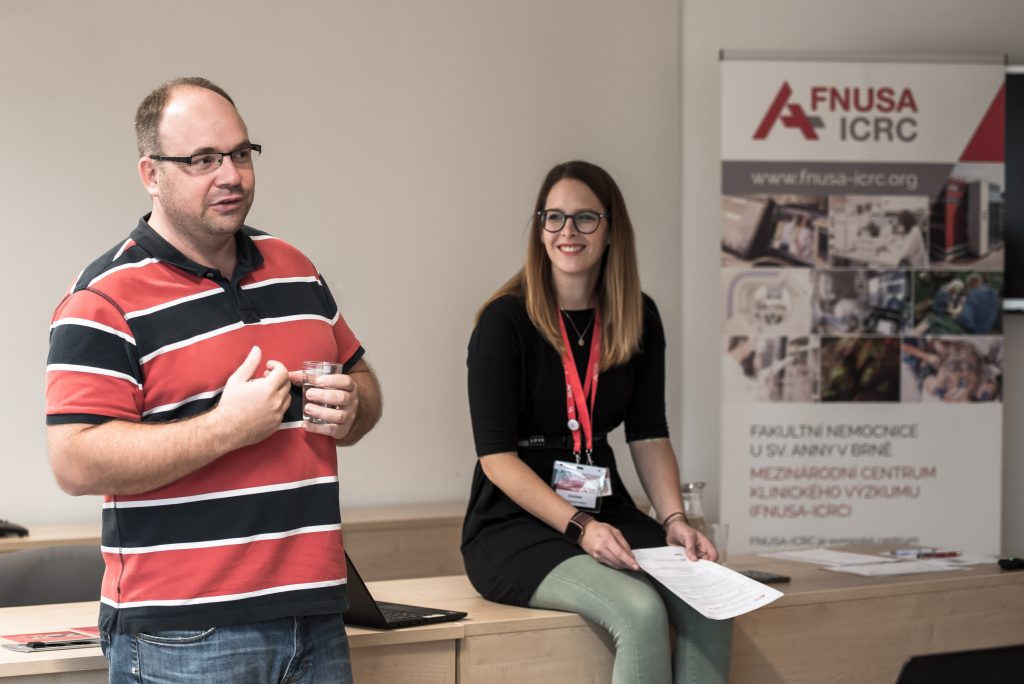MUDr. Martin Pešl, Ph.D. is a researcher at the International Clinical Research Center (FNUSA-ICRC) and a cardiologist specializing in arrhythmology at the 1st Department of Internal Cardioangiology, Faculty of Medicine, Masaryk University, and St. Anne’s University Hospital in Brno.
During his doctoral studies, he focused on the differentiation of stem cells into cardiomyocytes in Dan Kaufman’s lab at the Stem Cell Institute, University of Minnesota in Minneapolis. Together with Jan Přibyl (CEITEC MU), he developed a novel method for measuring the absolute contractile force of cardiomyocyte clusters using atomic force microscopy (AFM). He completed his Ph.D. in 2013 under the supervision of Prof. Petr Dvořák and Assoc. Prof. Tomáš Kára. After becoming a certified cardiologist, he completed a professional fellowship focused on epicardial approaches in animal electrophysiological experiments at the Mayo Clinic in Rochester, led by Prof. Samuel Asirvatham (Heart Rhythm Services Department).
In both his clinical and research work, he focuses primarily on arrhythmology, which is reflected in more than a hundred publications and several recent patents and utility models, such as in the field of electroporation as an alternative ablation technology.
Martin has long been dedicated to translational research bridging basic and clinical science. From 2020 to 2023, he served as Deputy Director for Translational Research at FNUSA-ICRC. Until the end of 2022, he led the international project CResPace (Horizon 2020), aimed at developing an intelligent, neuronally controlled pacemaker that mimics natural cardiovascular regulatory mechanisms. This project is now being followed up by a newly awarded European project, CResPulse (Horizon Europe), which continues to explore bioelectronic approaches to the treatment of chronic heart diseases.
He has been collaborating with the ICRC Academy since 2011 as a lecturer. Over the years, he has had the opportunity to work with many talented students whose exceptional achievements remain a lasting inspiration for the next generation of young scientists.


